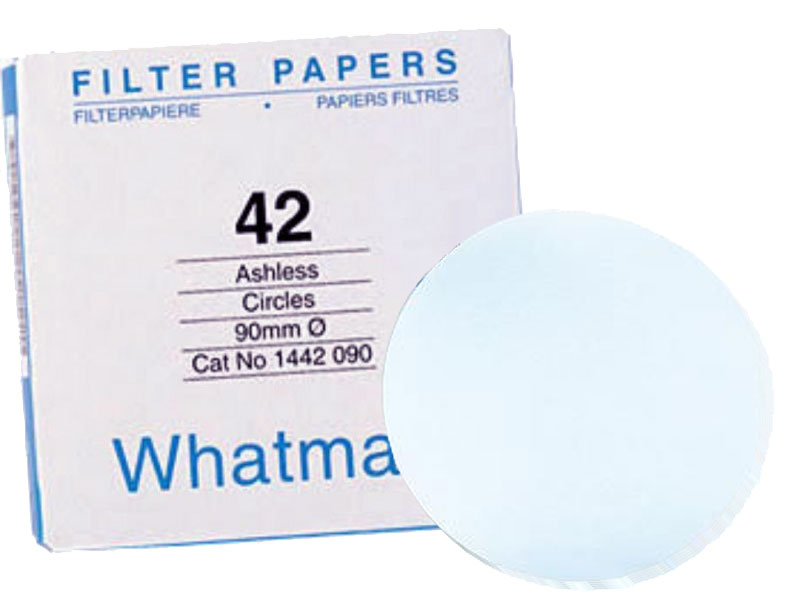Whatman filter paper is a popular choice for many filtration applications. There are a variety of different grades and types available, making it important to select the right one for your needs. In this guide, we will discuss the different types of Whatman filter paper and help you choose the right one for your application.
History of the Whatman filter paper
The history of Whatman filter paper dates back to the early 19th century. English chemist and inventor James Whatman developed a new type of paper that was more absorbent than other papers at the time. This new paper was used for filtration applications and quickly became popular among scientists.
What is Whatman filter paper used for?
Whatman filter paper is a type of paper that is specifically designed for use in scientific and industrial applications, including the food, pharmaceutical, and chemical industries. It is often used for filtration, as it is able to remove particles from liquids and gases. Whatman filter paper is available in a variety of different grades and types, each of which is suitable for different applications.
In order to select the right Whatman filter paper for your needs, it is important to understand the different grades and types that are available. The most common grades of Whatman filter paper are:
- Grade 0: The coarsest grade of Whatman filter paper, suitable for use with liquids that have high solids content.
- Grade I: A medium grade of Whatman filter paper, suitable for use with most liquids.
- Grade II: The finest grade of Whatman filter paper, suitable for use with liquids that have low solids content.
Types of Whatman filter paper
There is a variety of different types of Whatman filter paper available, each of which is suitable for different applications. The most common types of Whatman filter paper are:
– Quantitative: Quantitative Whatman filter paper is used for the accurate measurement of solids in liquids. It is more precise and we often use it for analytical applications. The type of filter paper you choose will depend on your specific needs.
– Qualitative: Qualitative Whatman filter paper is used for the removal of particles from liquids and gases. It is typically used for general filtration.
– Sterile: Sterile Whatman filter paper is used for the sterilization of liquids.
Ashless: Ashless paper is used for applications where the removal of ash is important, such as in the food and beverage industry.
Factors for choosing a Whatman filter paper
1. Identify the particle size
The first step in choosing the right Whatman filter paper is to identify the particle size of your application. It is available in a variety of pore sizes, from 0.45 microns to 90 microns. The pore size is the diameter of the pores in the paper and is typically measured in microns. The smaller the pore size, the finer the filtration. For example, if you are looking to filter out small particles, such as bacteria, you will need a Whatman filter paper with small pore size. On the other hand, if you are looking to filter out larger particles, such as dirt or sand, you will need a Whatman filter paper with larger pore size.
2. Identify the flow rate
The second step in choosing the right Whatman filter paper is to identify the flow rate of your application. It is available in a variety of flow rates, from slow to fast. The slower the flow rate, the more time the liquid has to be filtered. For example, if you are looking to filter a large amount of liquid, you will need a Whatman filter paper with a slow flow rate. On the other hand, if you are looking to filter a small amount of liquid, you will need a Whatman filter paper with a fast flow rate.
3. Identify the loading capacity
The third step in choosing the right Whatman filter paper is to identify the loading capacity of your application. It is available in a variety of loading capacities, from low to high. The lower the loading capacity, the less liquid the filter can hold. For example, if you are looking to filter a large amount of liquid then you will need a Whatman filter paper with a high loading capacity. On the other hand, if you are looking to filter a small amount of liquid, you will need a Whatman filter paper with a low loading capacity.
Now that you know the three main factors to consider when choosing a Whatman filter paper. It’s time to select the right one for your application.
What is Whatman paper No 42?
Whatman paper No. 42 is a general-purpose filter paper. People can use this filter paper for a variety of applications. It has a medium pore size and a smooth surface, making it ideal for filtering out suspended particles. This type of paper is also known for its high wet strength, meaning it won’t tear or disintegrate when wet.
What is Whatman paper No 40?
The most common type of Whatman filter paper is grade 40. It is a medium-flow paper that is suitable for most filtration applications. Grade-40 filter paper has a pore size of approximately 15 microns, making it effective at removing particles from the solution.
Conclusion
Whatman offers a variety of filter papers with different levels of precision, depending on your application. When selecting Whatman filter paper, it is important to consider both the grade and the type that you require. If you are unsure of which grade or type of Whatman filter paper to select, please consult with a scientific or industrial specialist.

